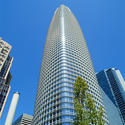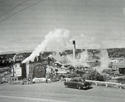Athens is the birthplace of Western culture, with the physical ruins of its classical age still visibly present as a perpetual reminder. Virgil composed his epic poem, The Aeneid, recounting the mythic flight of Aeneas from defeated Troy to Italy, becoming the forbear of Rome. New York sees itself as unique center of commerce, founded when the Dutch (not the English) bought Manhattan for beads in the city’s first hustle. Nashville needs no reminder that it’s the center of country music, nor Detroit that it is the Motor City. read more »
Small Cities
How the Virus Is Pushing America Toward a Better Future
Pessimism is the mood of the day, with 80 percent of Americans saying the country is generally out of control. Even before civil unrest and pestilence, most Americans believed our country was in decline, Pew reported, with a shrinking middle class, increased indebtedness and growing polarization. read more »
Highest Salaries for Software Developer Remote Work (Metro Areas)
COVID-19 lockdown and social distancing strategies have led to a huge increase in the number of people working at home (working remotely). According to Gallup, by mid-April, 62% of US employees were working at home. Further, Gallup found that about half of the remote workers preferred to continue working from home, with another quarter interested in remote working out of pandemic fears. read more »
- Login to post comments
The Future of Residential and Commercial Real Estate
What is the future of real estate after Covid-19? Please join Richard Florida, Joel Kotkin, Marshall Toplansky and other leading experts to see where the real estate market is going. We will be discussing issues including the future of office space, retail, affordable housing, inner cities, suburbs and small towns. read more »
- Login to post comments
The New Geography of America, Post-Coronavirus
When there is a general change in conditions, it is as if the entire creation had changed, and the whole world altered — Ibn Khaldun, 14th Century Arab historian read more »
- Login to post comments
Domestic Migration to Dispersion Accelerates (Even before COVID)
In what could turn out to be a “dry run” for the post-COVID19 era, net domestic migration has strongly shifted away from the larger metropolitan areas, to smaller areas. This “sea-change” has occurred since 2015, according to the latest Census Bureau estimates. Domestic migration is reported by the Census Bureau when a resident or household moves from one US county to another (No migration below the county level is reported in Census Bureau population estimates). read more »
- Login to post comments
Who Will Prosper After the Plague?
The COVID-19 pandemic is likely to widen even further the growing class divides now found in virtually every major country. By disrupting smaller grassroots businesses while expanding the power of technologies used in the enforcement of government edicts, the virus could further empower both the tech oligarchs and the “expert” class leading the national response to the crisis. read more »
- Login to post comments
The Coronavirus is Changing the Future of Home, Work, and Life
The COVID-19 pandemic will be shaping how we live, work and learn about the world long after the last lockdown ends and toilet paper hoarding is done, accelerating shifts that were already underway including the dispersion of population out of the nation’s densest urban areas and the long-standing trend away from mass transit and office concentration towards flatter and often home-based employment. read more »
- Login to post comments
Coronavirus, Labor, and an Aging World
In the last few months, we have gradually realized the dire nature of this global pandemic, and our response has been? Nothing short of the creation of a new world: hopefully not on the ruins of the last. The novel coronavirus is showing us the downside of accelerated mobility, excessive attention to short-term gains, and structural inequities in the micro and macro geographies of our planetary existence. read more »
- Login to post comments
Stockton, Fresno and Bakersfield Lead San Francisco Metro in Growth
In a March 26 article, The New York Times headlined: "Even before coronavirus, America's population was growing at slowest rate since 1919." Experts suggested that, with the coronavirus and falling immigration rates, the country could see a population decline next year.
Lurking behind this overall assessment was even bigger news for Californians. Improbably, the much smaller Stockton, Fresno and Bakersfield metropolitan areas are now growing faster than the San Francisco and Los Angeles metropolitan areas, as well as the San Diego metropolitan area. read more »
- Login to post comments






















